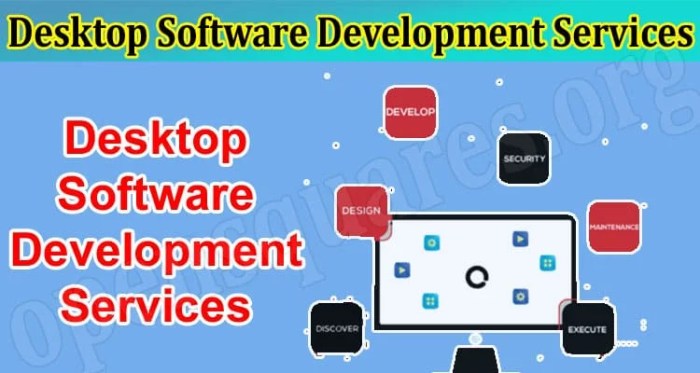Nearshore software development for desktop apps – In today’s rapidly evolving technological landscape, businesses are constantly seeking efficient and cost-effective solutions for software development. Nearshore software development offers a compelling alternative to outsourcing to distant locations, providing a blend of cost savings and proximity advantages. This comprehensive guide delves into the specifics of nearshore development for desktop applications, exploring its benefits, challenges, and best practices. We’ll cover crucial aspects like choosing the right nearshore partner, managing the development process, and ensuring successful project delivery.
Understanding Nearshore Software Development
Nearshore software development involves outsourcing software development projects to a country geographically closer to your own. Unlike offshore development, which typically involves significant time zone differences and cultural barriers, nearshore development offers a more streamlined collaboration experience. This proximity translates to easier communication, faster response times, and reduced cultural misunderstandings, all critical factors for successful desktop application development.
Benefits of Nearshore Desktop App Development, Nearshore software development for desktop apps
- Reduced Costs: While not as drastically lower as offshore rates, nearshore development still offers significant cost savings compared to in-house development, particularly in regions with lower labor costs.
- Improved Communication and Collaboration: Reduced time zone differences and geographical proximity facilitate smoother communication and faster issue resolution. This is crucial for agile development methodologies where frequent communication is key.
- Enhanced Cultural Understanding: While cultural differences still exist, they are often less pronounced than with offshore teams, leading to better collaboration and project understanding.
- Easier Travel and On-site Visits: Visiting your nearshore development team is significantly easier and more cost-effective than traveling to a distant offshore location.
- Better Time Zone Alignment: Overlapping work hours can significantly improve real-time collaboration and reduce delays caused by communication gaps.
- Access to Skilled Talent: Many nearshore locations boast a large pool of skilled software developers proficient in various technologies, including those relevant to desktop application development (e.g., C++, C#, Java, .NET, Electron).
Choosing the Right Nearshore Partner for Desktop App Development
Selecting the right nearshore partner is paramount to the success of your project. Consider these factors:

Source: pcti.edu
Key Considerations When Selecting a Nearshore Partner
- Technical Expertise: Assess the partner’s experience and expertise in developing desktop applications using your preferred technologies. Look for a portfolio that showcases relevant projects and successful deliveries.
- Communication Skills: Effective communication is crucial. Evaluate the partner’s communication channels and responsiveness. Schedule a meeting to assess their communication style and clarity.
- Project Management Methodology: Ensure the partner aligns with your preferred project management methodology (e.g., Agile, Waterfall). Understanding their processes and tools is vital for seamless collaboration.
- Security and Data Protection: Data security is paramount, especially when dealing with sensitive information. Verify the partner’s security protocols and compliance with relevant regulations (e.g., GDPR, CCPA).
- References and Testimonials: Request references from previous clients and thoroughly review their testimonials to gauge the partner’s reliability and performance.
- Legal and Contractual Aspects: Carefully review the contract, ensuring clarity on intellectual property rights, payment terms, and dispute resolution mechanisms.
- Location and Time Zone: While nearshore implies proximity, consider the specific time zone difference and its potential impact on daily communication and collaboration.
Managing the Nearshore Development Process: Nearshore Software Development For Desktop Apps
Effective project management is crucial for successful nearshore development. Consider these best practices:
Best Practices for Nearshore Project Management
- Clearly Defined Requirements: Ensure comprehensive and unambiguous documentation of project requirements to minimize misunderstandings and deviations.
- Regular Communication: Establish a clear communication plan with regular meetings, updates, and progress reports to maintain transparency and address issues promptly.
- Version Control and Collaboration Tools: Utilize version control systems (e.g., Git) and collaborative tools (e.g., Slack, Microsoft Teams) to facilitate seamless code sharing and teamwork.
- Agile Development Methodology: Agile methodologies, with their iterative approach and emphasis on flexibility, are often well-suited for nearshore development projects.
- Dedicated Project Manager: Assign a dedicated project manager to oversee the project, ensuring effective communication and coordination between your team and the nearshore partner.
- Regular Quality Assurance: Implement robust quality assurance processes throughout the development lifecycle to ensure the delivered software meets your standards.
Technologies Used in Nearshore Desktop App Development
Nearshore developers are proficient in a wide range of technologies used for desktop application development. Some of the most common include:
- C++: A powerful and versatile language often used for high-performance applications.
- C#: A popular language within the .NET framework, ideal for Windows desktop applications.
- Java: A platform-independent language suitable for cross-platform desktop applications.
- .NET Framework/ .NET MAUI: Microsoft’s framework for building Windows desktop and cross-platform applications.
- Electron: A framework for building cross-platform desktop applications using web technologies (HTML, CSS, JavaScript).
- Qt: A cross-platform application and UI framework.
Frequently Asked Questions (FAQ)
- Q: What are the key differences between nearshore and offshore development? A: Nearshore development involves outsourcing to a geographically closer country, leading to better communication, reduced time zone differences, and easier collaboration compared to offshore development.
- Q: How can I ensure data security when using a nearshore development partner? A: Thoroughly vet potential partners, reviewing their security protocols and compliance with relevant regulations. Clearly define data security requirements in the contract.
- Q: What are the common challenges of nearshore development? A: Potential challenges include cultural differences (though often less pronounced than with offshore development), communication barriers, and the need for careful contract negotiation.
- Q: How do I choose the right technology for my desktop application? A: The choice depends on factors such as performance requirements, target platforms, development expertise, and budget. Consider the pros and cons of each technology before making a decision.
- Q: What is the typical cost of nearshore desktop application development? A: Costs vary significantly based on factors such as project complexity, developer expertise, and location. It’s essential to obtain detailed quotes from potential partners.
Conclusion
Nearshore software development offers a compelling approach for businesses seeking efficient and cost-effective solutions for desktop application development. By carefully selecting a nearshore partner, implementing effective project management practices, and utilizing appropriate technologies, businesses can leverage the benefits of nearshore development to achieve their software development goals. Remember to prioritize clear communication, robust security measures, and a well-defined contract to ensure a successful project outcome.

Source: software-craft.com
References
While specific articles on nearshore development
-specifically* for desktop apps are limited, the following resources provide valuable information on related topics:
- Outsourcing.com (General outsourcing information)
- Forbes (Articles on technology and outsourcing trends)
- Gartner (Market research on software development)
Call to Action
Ready to explore the benefits of nearshore software development for your next desktop application project? Contact us today for a free consultation!
Detailed FAQs
What are the key differences between nearshore and offshore development?
Nearshore development involves partnering with teams in geographically closer locations, minimizing time zone differences and communication barriers. Offshore development utilizes teams in distant locations, often resulting in greater time zone differences and communication challenges.
How can I ensure the quality of nearshore development?
Thorough due diligence is crucial. Verify the developer’s experience, review their portfolio, and establish clear communication channels and project management processes. Regular check-ins and well-defined quality assurance protocols are essential.
What are some common challenges of nearshore development?
Potential challenges include cultural differences (though often less pronounced than with offshore), managing expectations across different locations, and ensuring consistent communication and collaboration. Careful planning and selection of a partner can mitigate these risks.
What types of desktop applications are best suited for nearshore development?

Source: opensquares.org
Nearshore development is well-suited for a wide range of desktop applications, from simple utilities to complex enterprise software. The best fit depends on project scope, complexity, and budget.
